Funny Interpretation of a Bible Story
20 of the most bizarre stories from the bible
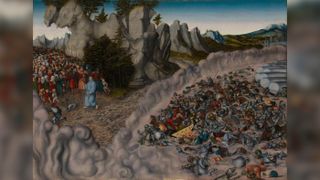
From a talking donkey to a man being eaten by a giant fish, the Bible has no shortage of foreign stories. In her new book "A Most Peculiar Book: The Inherent Strangeness of the Bible" (Oxford University Press, 2021), Kristin Swenson, an associate professor of religious studies at Virginia Commonwealth Academy, delves into these stories and many others. Here'south a expect at 20 of the more baroque biblical stories that Swenson discusses in the book. Some, such as Jonah being eaten by a behemothic fish, refer to important archaeological sites, similar Nineveh, an aboriginal Assyrian city in modern-twenty-four hours northern Iraq. Others, such every bit that of a literal scapegoat, explicate how phrases that are commonly used in modernistic times came into existence.
Human-God hybrids
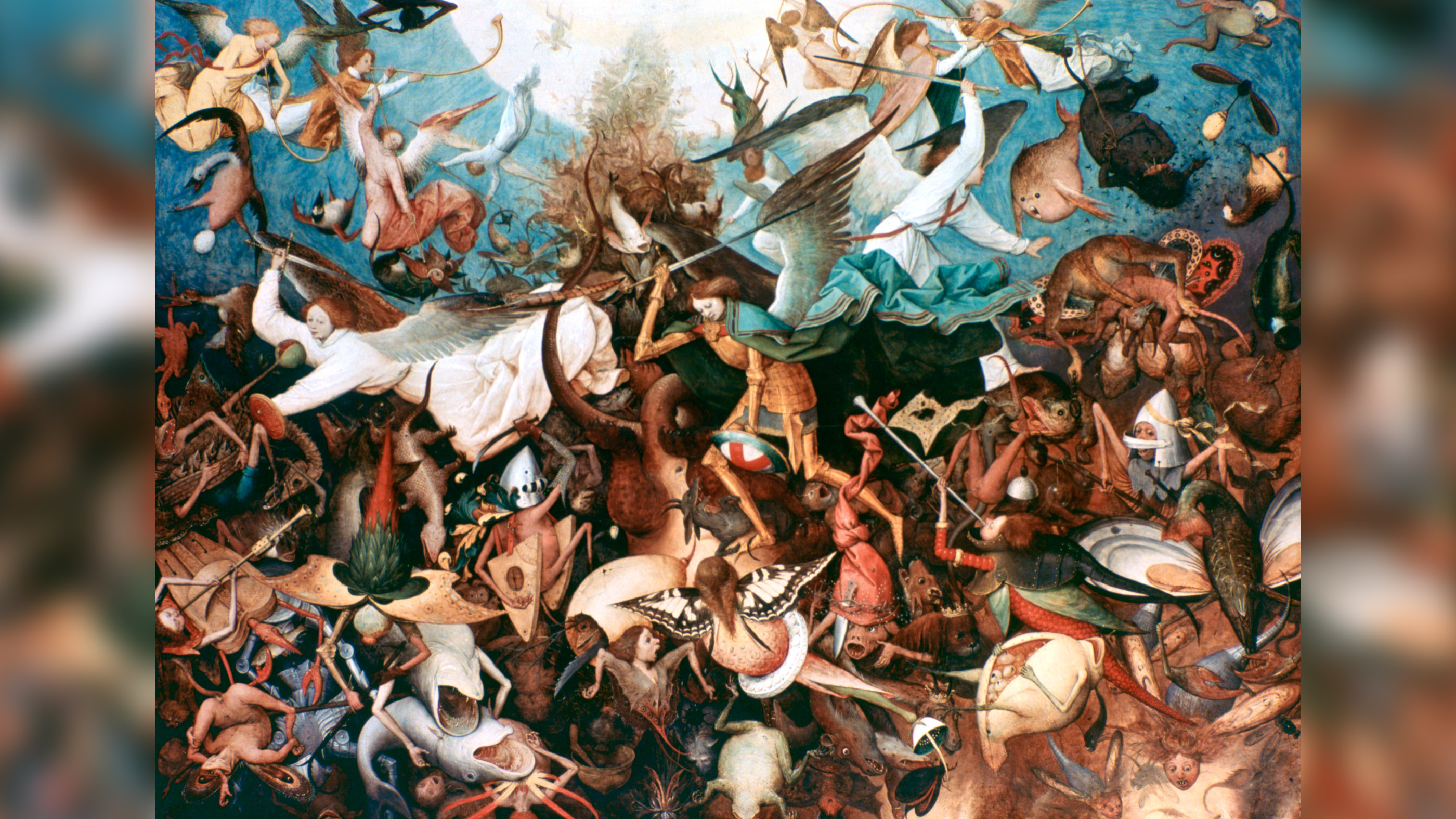
The Bible as well introduces mysterious superhumans that influenced God's decision to send a inundation (opens in new tab) that covered the Earth (opens in new tab).
The Book of Genesis says, "The sons of God saw that the daughters of humans were cute, and they married any of them they chose," Genesis 6:ii. Their children were god-human hybrids that the Bible refers to as the "Nephilim."
God was unhappy about this interbreeding and "regretted that he had made man beings on the earth, and his center was deeply troubled," Genesis 6:half dozen. So he sent a alluvion that wiped out many of the humans and Nephilim, but not earlier ordering Noah to build an ark that saved a select few. The biblical story suggests that the breeding between gods and humans was a major factor in God'south conclusion to send the alluvion.
The stop?
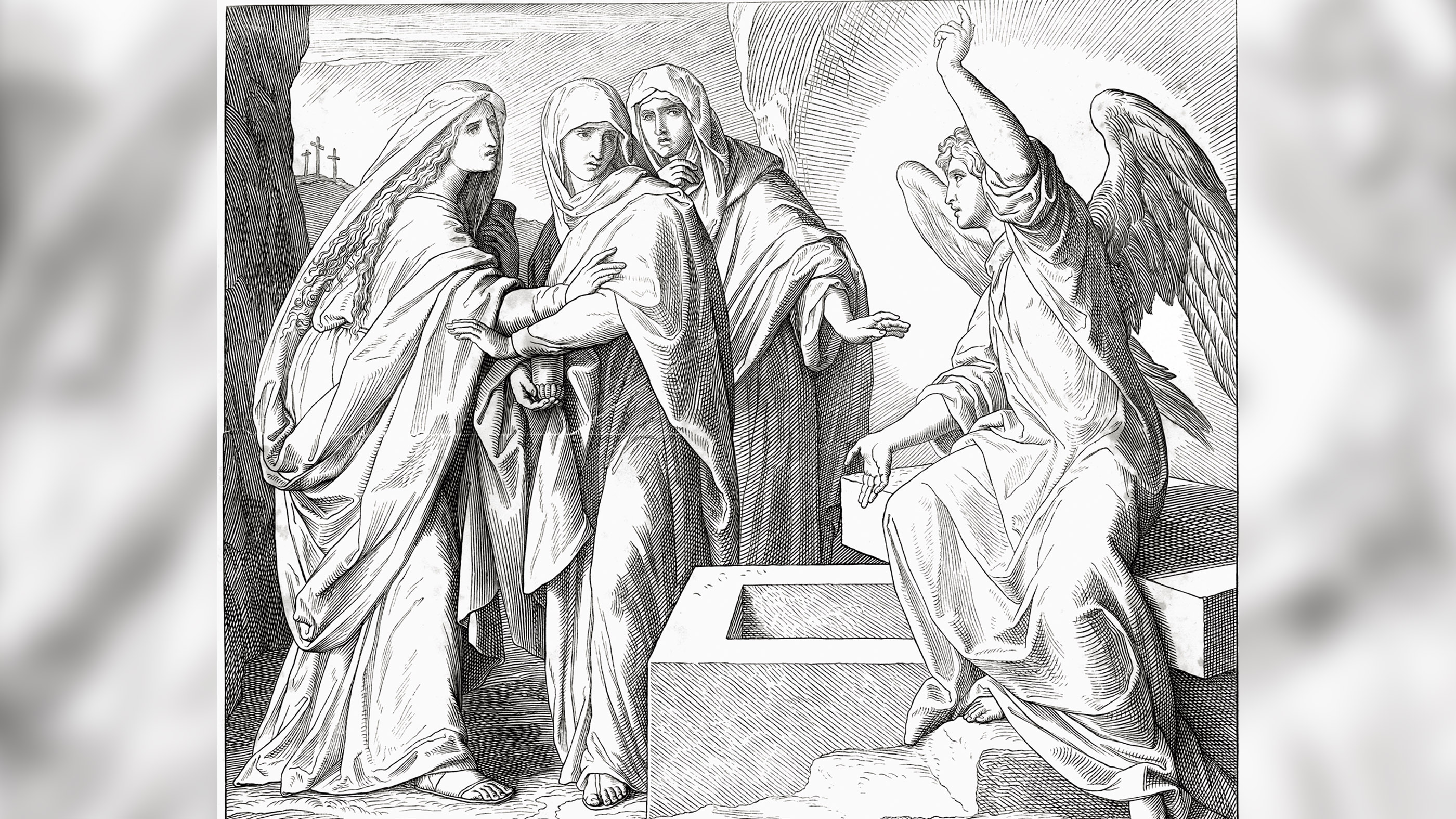
Many scholars believe that the Gospel of Marker is the oldest of the Gospels, beingness composed around A.D. 70, about 40 years after the crucifixion of Jesus (opens in new tab). It is also the Gospel with the most sharp and unusual catastrophe: Information technology finishes with Mary Magdalene and two other women bringing spices to Jesus' tomb and then that they can anoint his body. They discover the tomb open and a beau in a white robe sitting inside.
The immature man told them non to be alarmed. "You are looking for Jesus the Nazarene, who was crucified. He has risen! He is not here," the boyfriend said, telling the three women to go and deliver the resurrection news to Jesus' disciples. "Trembling and bewildered, the women went out and fled from the tomb. They said nothing to anyone, because they were afraid," Mark 16:vi-8. That is the last line of the Gospel.
Why the Gospel of Mark ends so abruptly has long been a mystery. In after times, Christian writers tacked on a longer ending to the gospel that included Jesus talking to his disciples and Mary Magdalene; his disciples then went out to preach.
Family issues

In the Gospel of Luke, Jesus has an unusual requirement for his disciples: that they take to hate their ain family.
"Big crowds were traveling with Jesus, and turning to them, He said, 'If anyone comes to me and does not detest father and female parent, married woman and children, brothers and sisters — yes, even their own life — such a person cannot be my disciple,'" Luke 14:25-26.
Why Jesus said this is a affair of argue. One possibility is that there was additional context that was lost over time or that data was passed downward incorrectly or misinterpreted.
"People are responsible for the texts as we have them. Did God take a say in information technology? That's a affair of belief. But there'due south no denying that the texts come to us through man hands," Swenson wrote.
Big fish story
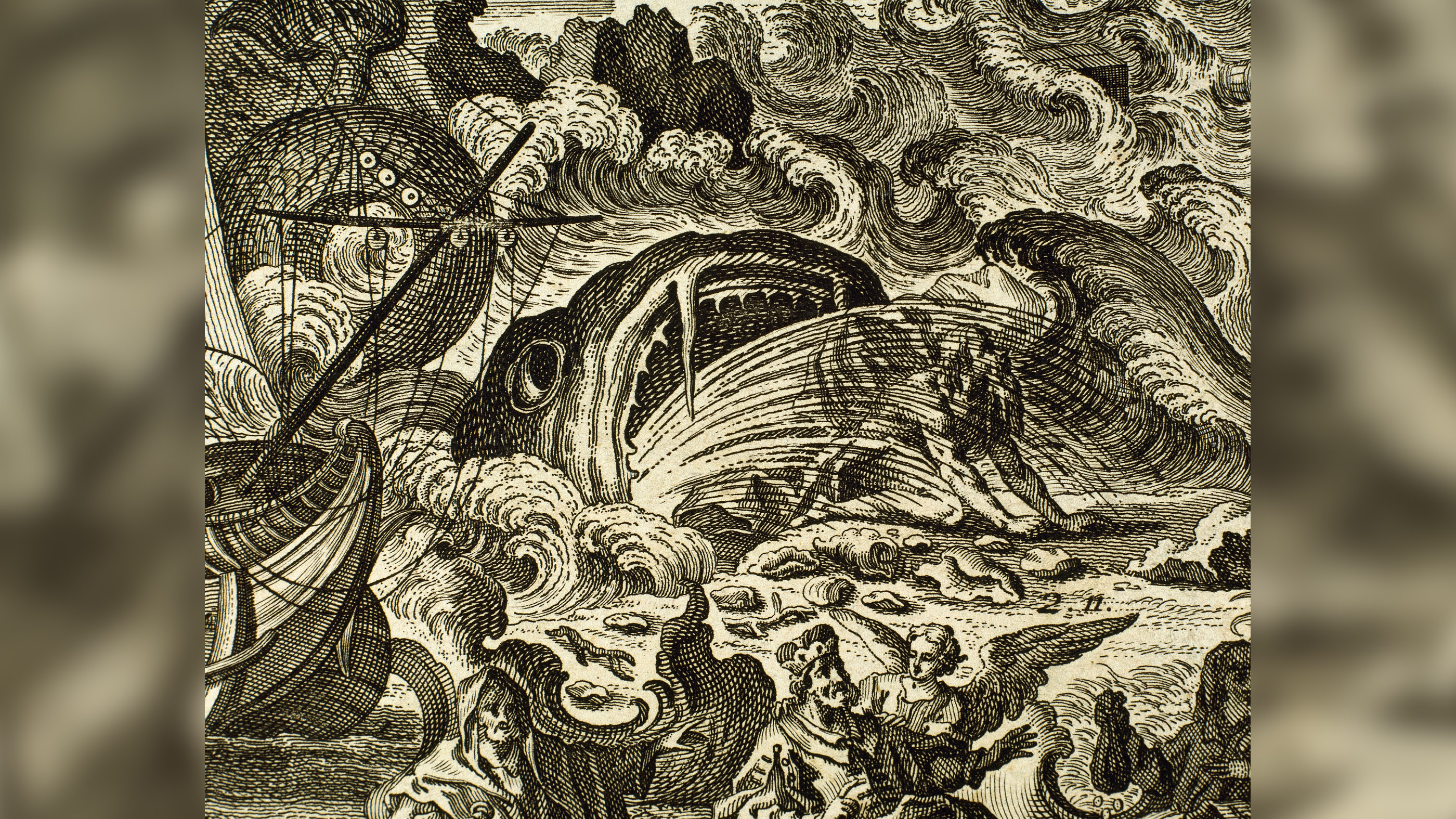
Did a whale really consume Jonah? Not quite.
The Book of Jonah tells of how God tried to convince a human named Jonah to travel to the city of Nineveh "and preach confronting information technology, because its wickedness has come upwardly before me," Jonah i:2. Jonah was not enthusiastic about the idea and tried to run away from God by boarding a transport and sailing to a city called Tarshish.
Jonah never made it to Tarshish, as a storm ravaged the ship. In a bid to calm the storm, the send's sailors throw Jonah overboard. God "provided a huge fish to swallow Jonah, and Jonah was in the belly of the fish iii days and three nights," Jonah ane:17). While people sometimes call up a whale swallowed Jonah, the Bible uses the word "fish."
Other mysterious resurrections

The Gospel of Matthew claims that Jesus wasn't the only one who came back to life: "The bodies of many holy people who had died were raised to life. They came out of the tombs afterward Jesus' resurrection and went into the holy city and appeared to many people," Matthew 27:52.
The Gospel doesn't tell us much more than about these other people who came back to life. What were they like later they were resurrected? How long did they live after? Did they resume their previous lives? How did they interact with their family members? The Bible provides little insight into these questions.
Literal scapegoat
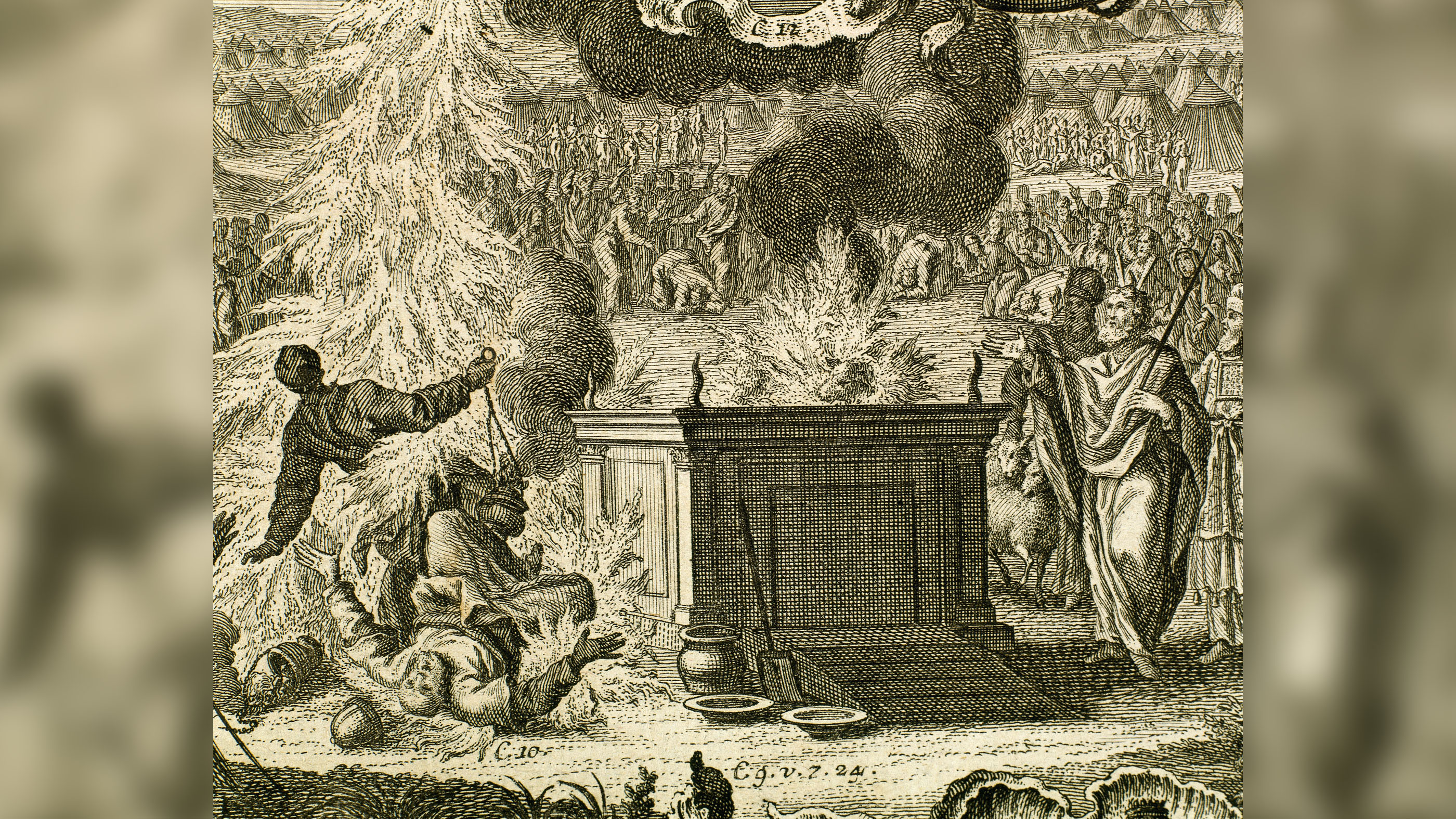
At one bespeak, God is annoyed at Aaron, the brother of Moses, for frequently standing backside a set of defunction near the Ark of the Covenant. God regards the expanse behind the drape every bit a private area that people should stay away from when possible. God is also frustrated with the Israeli people in full general for their "uncleanness and rebellion." Every bit atonement, God orders Aaron to present offerings, including two goats; one shall be sacrificed, and the other "shall be presented alive before the Lord to be used for making atonement by sending information technology into the wilderness as a scapegoat," Leviticus xvi:10.
Swenson wrote that "the biblical scapegoat was, then, an individual innocent who nevertheless bore away the people's sins. In this sense, the scapegoat prefigures Jesus, centuries before Jesus ever was." The term continues to be used today for an innocent person who takes the blame for the sins of others.
Exceedingly long life spans

The Book of Genesis is brimming full of centenarians.
"When Adam had lived 130 years, he had a son in his ain likeness, in his own paradigm; and he named him Seth. After Seth was born, Adam lived 800 years and had other sons and daughters. Birthday, Adam lived a total of 930 years, and then he died. When Seth had lived 105 years, he became the male parent of Enosh. After he became the male parent of Enosh, Seth lived 807 years and had other sons and daughters. Birthday, Seth lived a total of 912 years, and then he died. When Enosh had lived 90 years, he became the father of Kenan. Afterwards he became the father of Kenan, Enosh lived 815 years and had other sons and daughters. Altogether, Enosh lived a total of 905 years, and and so he died," Genesis 5:iii-10.
Scholars accept long debated why the Volume of Genesis tells of people having superlong life spans, Swenson wrote in her book. 1 possibility is that the writers of Genesis measured the length of a twelvemonth differently, she said; another possible explanation is that the shortening of life spans equally the Bible goes on is a penalization for humanity's sins.
Nile turning to blood
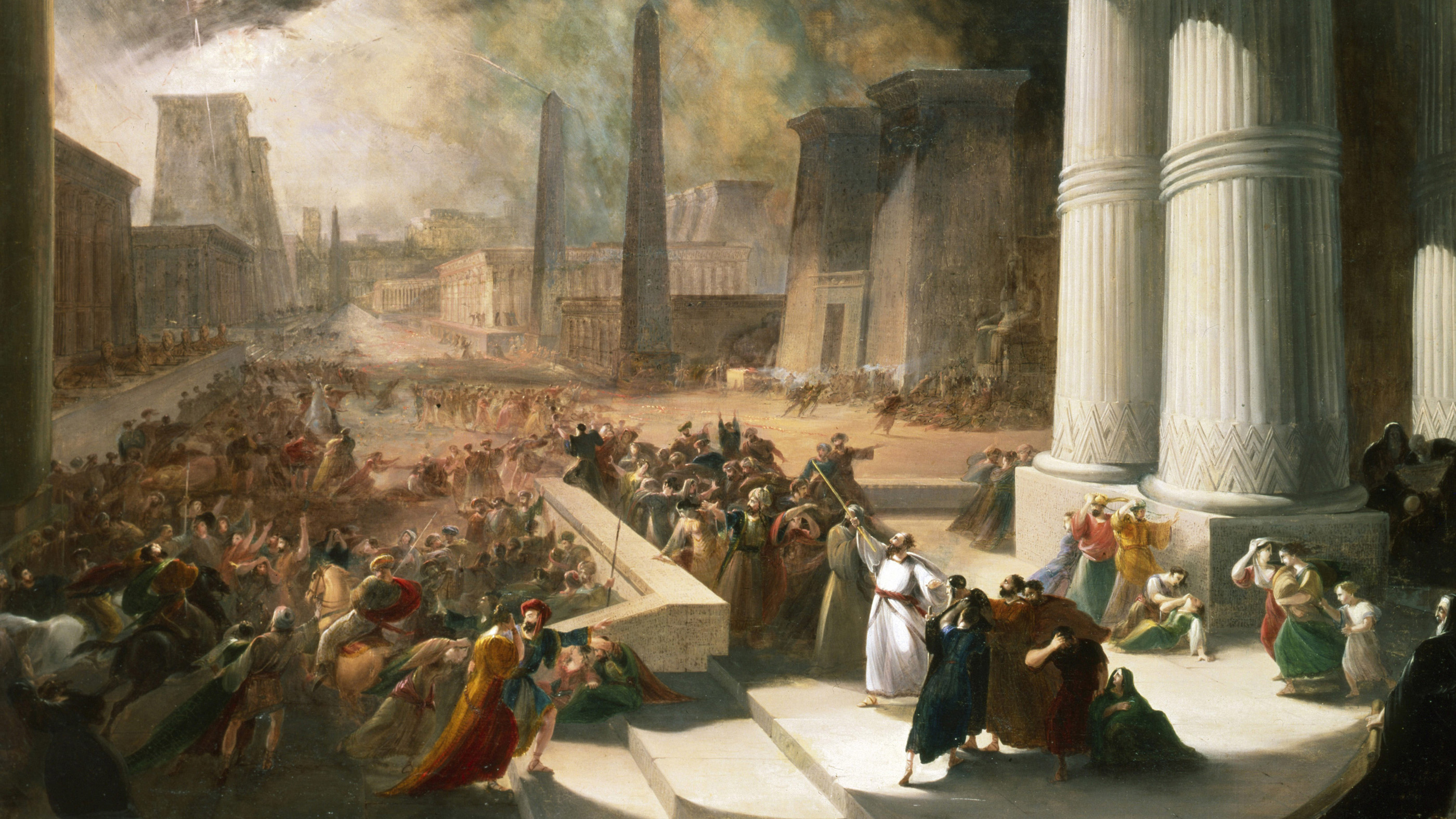
The longest river in the globe could have been filled not with freshwater but with blood, at least co-ordinate to ane passage in the Bible.
After Egypt'south pharaoh refuses to grant the Israelites freedom, God tells Moses and Aaron to utilize their staffs to plow the Nile river to claret. "Moses and Aaron did as the Lord commanded. In the sight of Pharaoh and in the sight of his servants he lifted up the staff and struck the h2o in the Nile, and all the water in the Nile turned into blood. And the fish in the Nile died, and the Nile stank, so that the Egyptians could not potable water from the Nile. There was blood throughout all the land of Egypt (opens in new tab)," Exodus seven:20-21.
The pharaoh merely shrugs off what happened. "Pharaoh turned and went into his business firm, and he did not take even this to heart. And all the Egyptians dug along the Nile for water to drink, for they could not potable the h2o of the Nile (opens in new tab)," Exodus 7:23-24.
At that place is one Egyptian tape that refers to an issue that sounds a bit like this. The Ipuwer papyrus, written in the proper noun of a homo named "Ipuwer," discusses Egypt suffering from anarchy and warfare and says that "the river is blood." The text dates back more than than iii,000 years although its precise appointment is a matter of argue amidst scholars. Another, more mundane, explanation for why the Nile may appear ruddy is that red algae bloom can crusade the water to announced reddish.
Related: The science of the 10 plagues (opens in new tab)
Hell is a garbage pit
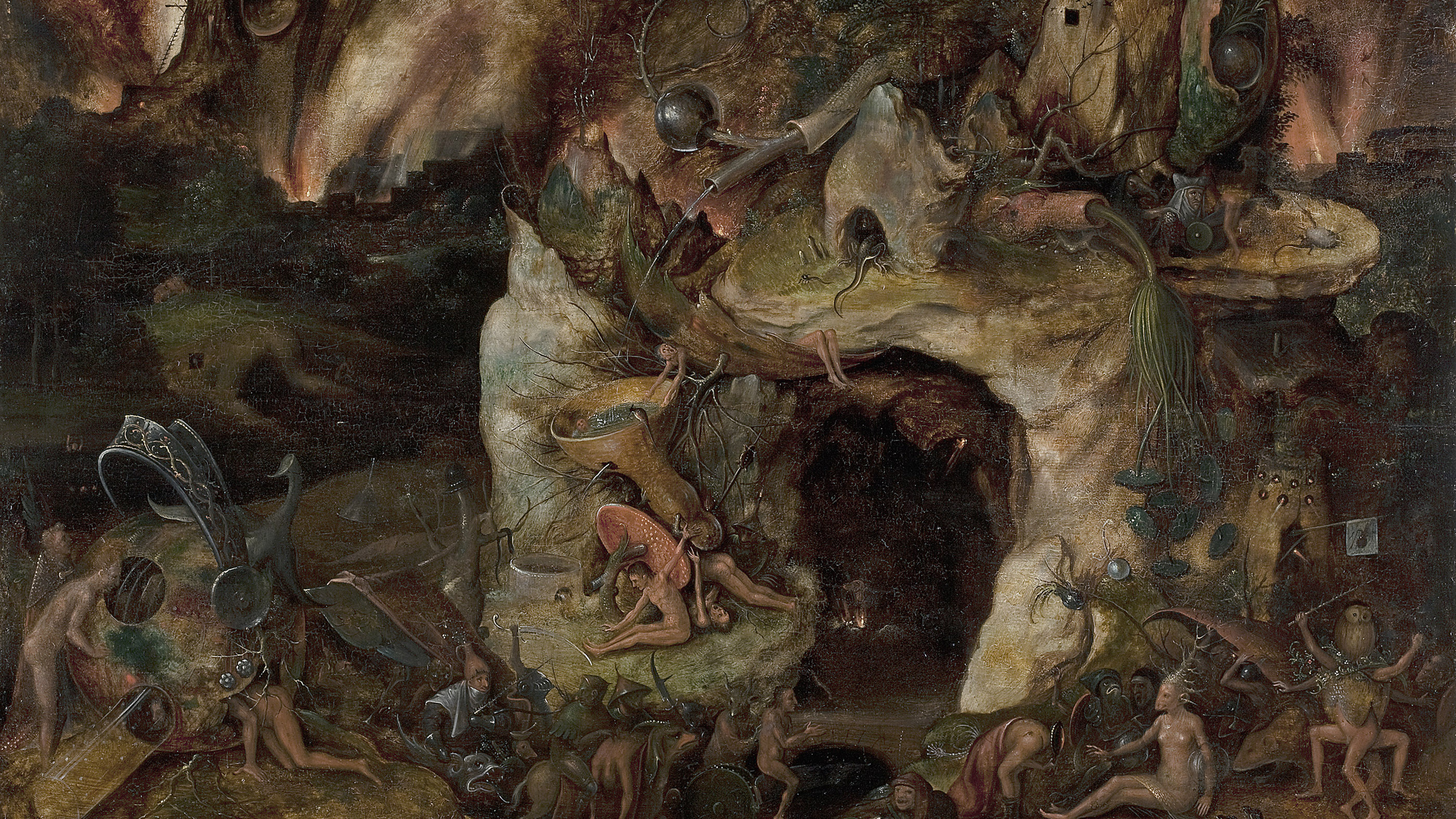
The bible doesn't shy away from the abode for the eternally damned.
Jesus warns people of the dangers of going to hell if they sin. He says, for example, "If your right center causes you lot to stumble, gouge information technology out and throw it away. It is better for you lot to lose one part of your body than for your whole body to be thrown into hell," Matthew five:29.
In her book, Swenson noted that the word "hell" is a translation of the Greek give-and-take "gehenna," which is an actual place that ane could see in ancient Jerusalem. "Gehenna was where Jerusalem burned its garbage, and since the metropolis and the surrounding communities generated a lot of garbage, gehenna was e'er burning," Swenson wrote. "When Jesus warned that a person might finish up in gehenna, he probably didn't mean the literal, incinerating gehenna-dump outside of Jerusalem."
Called-for bush

Another, more heavenly fire burns in the Volume of Exodus, when God appears to Moses in the form of a called-for bush. Moses was tending a flock of animals when he saw that a "bush was on burn down; it did not burn upwards." Moses went over to investigate, and "God called to him from within the bush-league, 'Moses! Moses!' And Moses said, 'Here I am,'" Exodus 3:four.
"'Do non come any closer,' God said. 'Take off your sandals, for the place where you are continuing is holy ground.' Then he said, 'I am the God of your male parent, the God of Abraham, the God of Isaac and the God of Jacob.' At this, Moses hid his face up, because he was afraid to await at God" Exodus 3:5-six. God then tells Moses how he plans to bring the Israelites out of Egypt.
The apply of a bush-league that burns but is undamaged is but i case of God "coloring outside the lines of natural processes," Swenson wrote. "That is, God, in all God's godness, does extraordinary things because God tin can."
God tries to kill Moses

The Book of Exodus as well contains a baffling turn of events: At one point, God gives Moses instructions on what he must do to help free the Israelites from Egypt's pharaoh. God gave Moses special capabilities, such as the ability to turn his staff into a serpent. However, every bit Moses heads toward Egypt, God gets another idea.
"At a lodging place on the way, the Lord met Moses and was virtually to impale him. But Zipporah [the wife of Moses] took a flintstone knife, cut off her son'southward foreskin and touched Moses' anxiety with it. 'Surely you are a benedict of blood to me,' she said. So the Lord allow him solitary," Exodus 4:24-26.
Scholars have been baffled about why God initially planned to kill Moses, Swenson said. One possibility is that some passages from this biblical story that may have shed light on that question were lost.
Moses has horns?
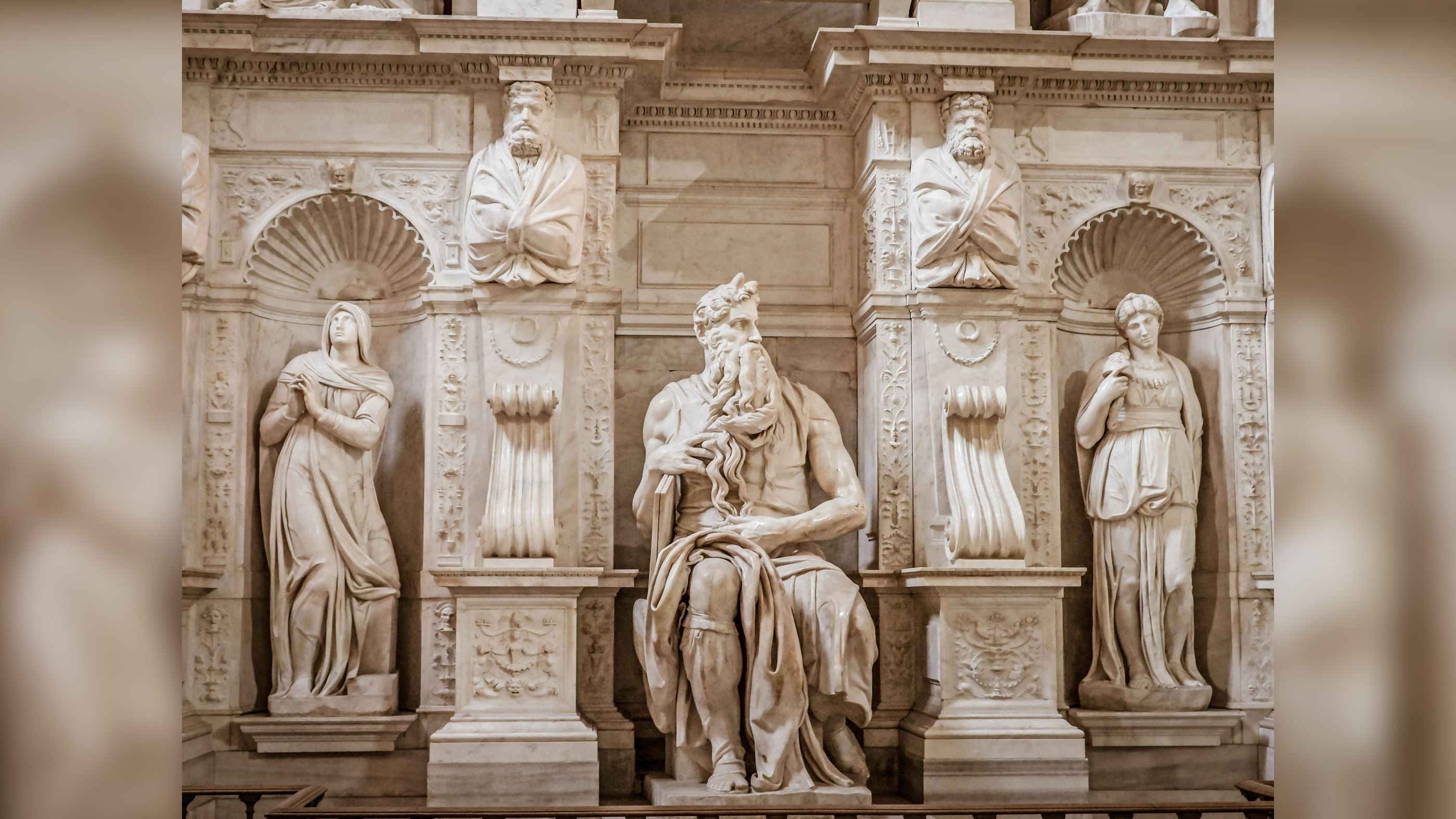
Information technology's also in the Book of Exodus that Moses' horns come out, literally.
Moses, on behalf of the Israelites, made a covenant with God on Mountain Sinai. In the covenant, God promises that the Israelites will take command of a vast amount of land in the Levant but, in render, must worship God and follow his rules, the Ten Commandments in particular. Moses chisels the covenant onto two stone tablets. After he returns from Mountain Sinai, his face has been transformed, and he is wearing a veil.
Related: Did a scholar actually detect an early on copy of the Ten Commandments? (opens in new tab)
"Most modernistic translations say information technology 'shone' or some such synonym," Swenson wrote. "Just that'south a estimate, considering the [Hebrew] word, qaran, doesn't appear anywhere else in the Bible." One possibility is that the discussion "qaran" actually means "horns," because it is similar to a common Hebrew noun, "qeren," which means "horn." In other words, Moses grew horns after making the covenant with God.
Some people in the Heart Ages believed that Moses had grown horns and that "much medieval artwork — too as earlier and later work — depicts a Moses with horns," Swenson wrote, noting that the iconography of the ancient Near Due east "shows the prevalence of horns on gods and goddesses, the association of horns with exceptional beings and special power."
Talking donkey
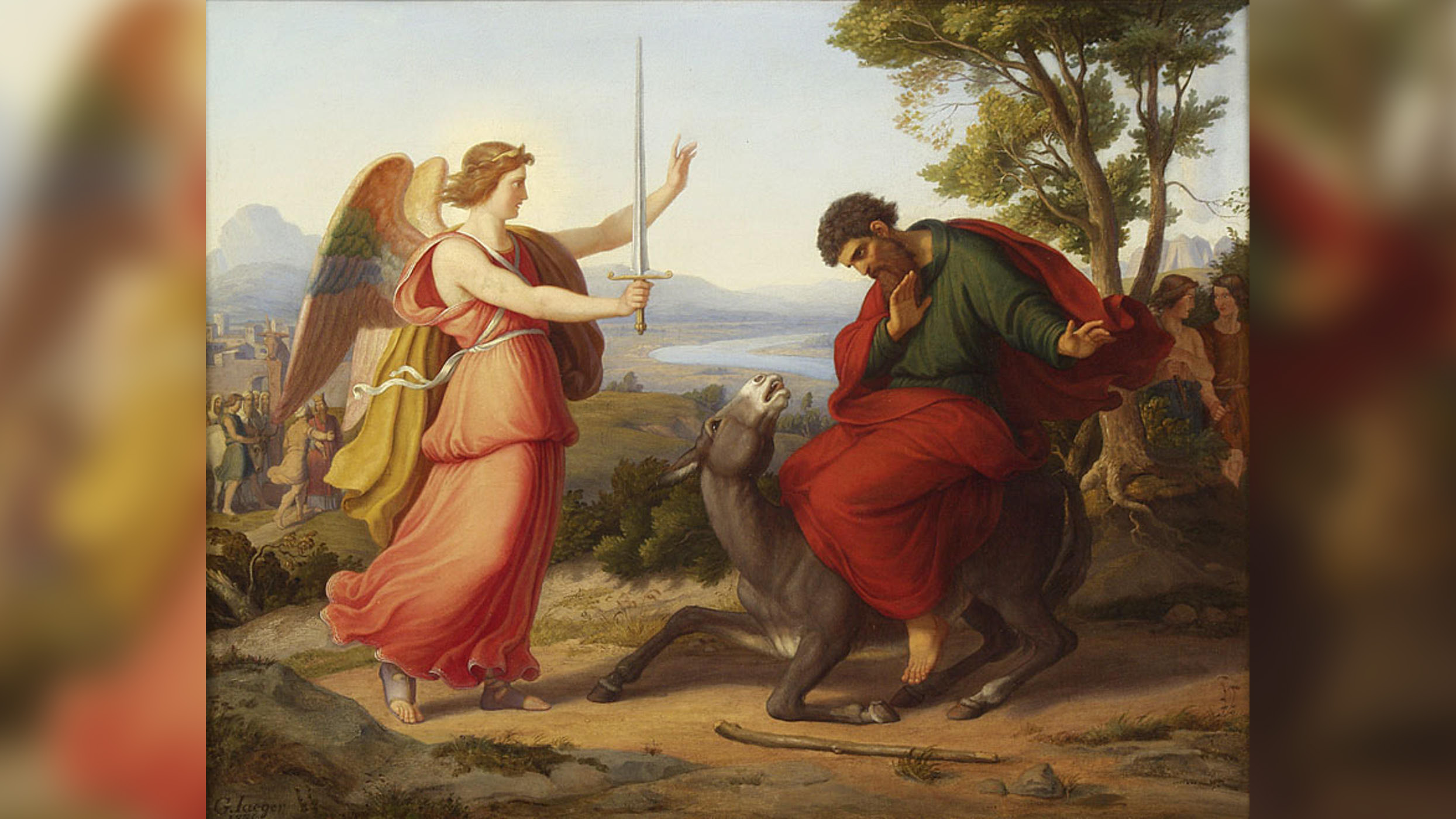
In the Book of Numbers, a prophet named Balaam is on the route when his donkey stops three times. Each time, Balaam beats the donkey in an effort to become information technology moving. Plainly, God has given the donkey the power to speak and it says: "What have I done to you to make you beat me these three times?" she says to Balaam, Numbers 22:28.
Balaam, who does not appear to be surprised that his donkey is talking to him, replies, "You have fabricated a fool of me! If only I had a sword in my hand, I would kill you right at present." The donkey replies, "Am I not your own donkey, which yous take e'er ridden, to this mean solar day? Have I been in the habit of doing this to you?" Numbers 22:30.
Then, the "angel of the Lord" appears and tells Balaam that the donkey had saved Balaam'south life. "The ass saw me and turned away from me these three times. If it had not turned abroad, I would certainly have killed you past at present, just I would have spared information technology," the affections of the Lord says. Balaam then apologizes for his behavior.
Balaam must be baffled over why God is threatening his life, Swenson noted, especially since Balaam had non carried through with harming the Israelites. Prior to the donkey incident, a Moabite leader named Balak had been request Balaam to curse the Israelites. Despite the vast amount of gilded the Moabites offered Balaam for the chore, Balaam obeys God and spares the Israelites.
Gnarly vision
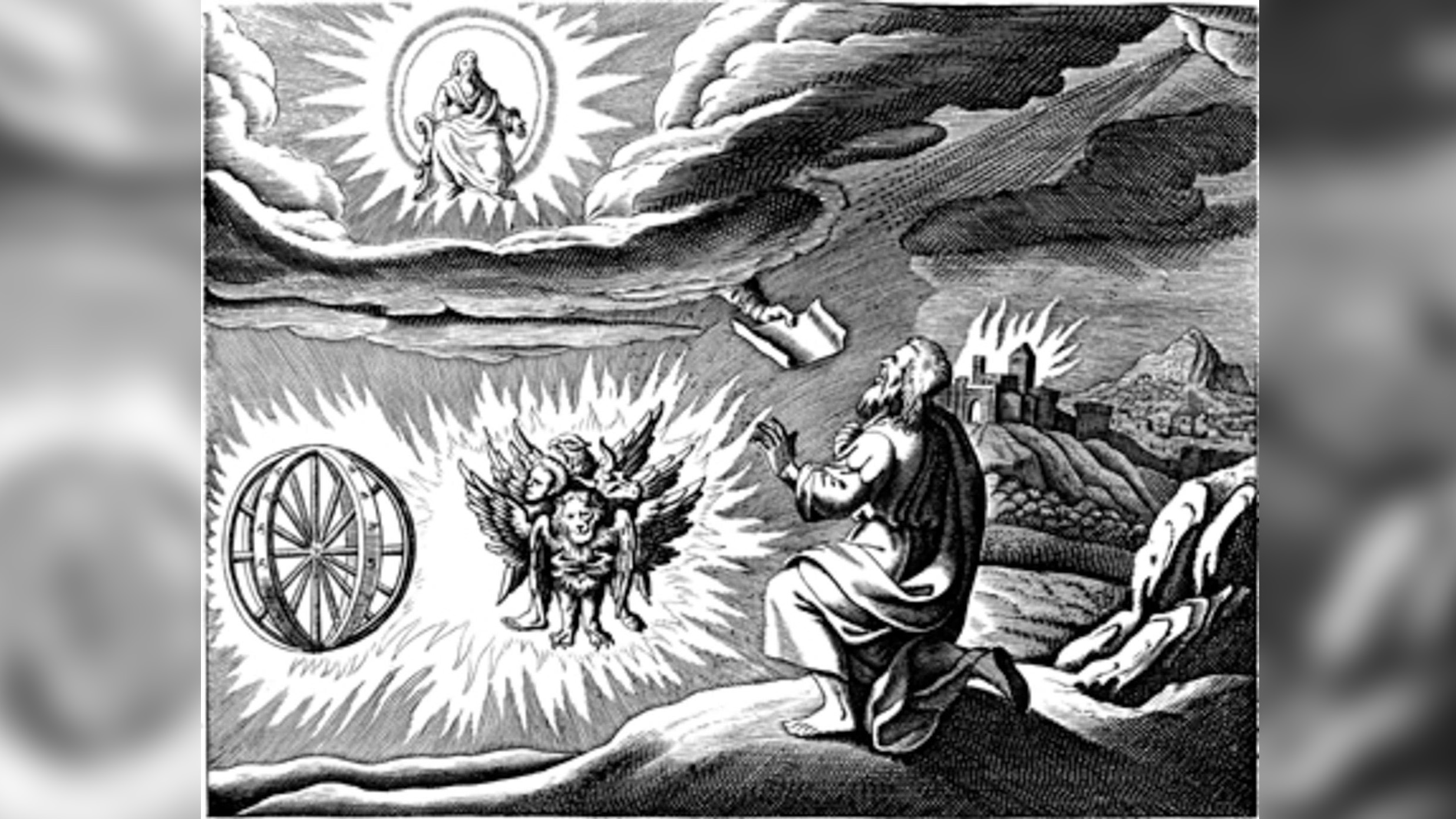
In one utterly bizarre vision of God, the prophet Ezekiel says God appears to him on "a throne of lapis lazuli" equally "a figure similar that of a homo. I saw that from what appeared to exist his waist up he looked similar glowing metal, as if total of fire, and that from there down he looked similar fire; and brilliant lite surrounded him," Ezekiel ane:26-27.
In the vision, Ezekiel also mentions seeing iv "living creatures" near God. "In appearance their form was human, but each of them had four faces and four wings," with a wheel on the ground beside each of the creatures, Ezekiel 1:half-dozen.
This story is set up subsequently the destruction of the First Temple by the Babylonians in 586 B.C., Swenson said. And and then, she noted, this dramatic appearance may be a way of saying that God is alive despite the devastation of the temple.
Seven demons

Jesus drove vii demons out of Mary Magdalene, according to the books of Marking and Luke. "In the Gospels of Marker and Luke, we read that Jesus cast 7 demons out of her," Swenson wrote. "Just what were those demons or the nature of this possession, the Bible doesn't say.
Were these the seven mortiferous sins?
"It doesn't say that these were seven sins, deadly or otherwise, though yous can imagine the heyday artists have had depicting them," she added. "And the Bible doesn't say what effect the demons had on her, physical or emotional, though modernistic readers have speculated that they may take manifested as what we today would diagnose equally varieties of illness, mental and otherwise." Information technology's not known whether Mary Magdalene suffered from whatever illnesses nor what those illnesses may have been. The Bible provides few clues every bit to her health, and there are no historical records revealing that information.
Fierce cherubs

In mod times, cherubs are oft depicted every bit celestial infants with wings. In biblical stories, however, cherubs are sometimes menacing. In fact, they guard the Garden of Eden and the Ark of the Covenant.
"Contrary to pop stance and many a Christmas card, the Bible's cherubim are ferocious creatures — hybrid beings non establish in nature merely probably informed past ancient Near Eastern iconography," Swenson wrote. "They would have to exist scary, serving as they did to guard the sacred."
Modern-mean solar day commercial appeal appears to have played a role in reducing cherubs from biblical guardians to harmless angelic infants. In 1946, an Indianapolis department store included images of cherubs drawn as infants in their holiday catalog and the popularity of the prototype grew from in that location, Swenson noted.
A pharaoh's hardened middle
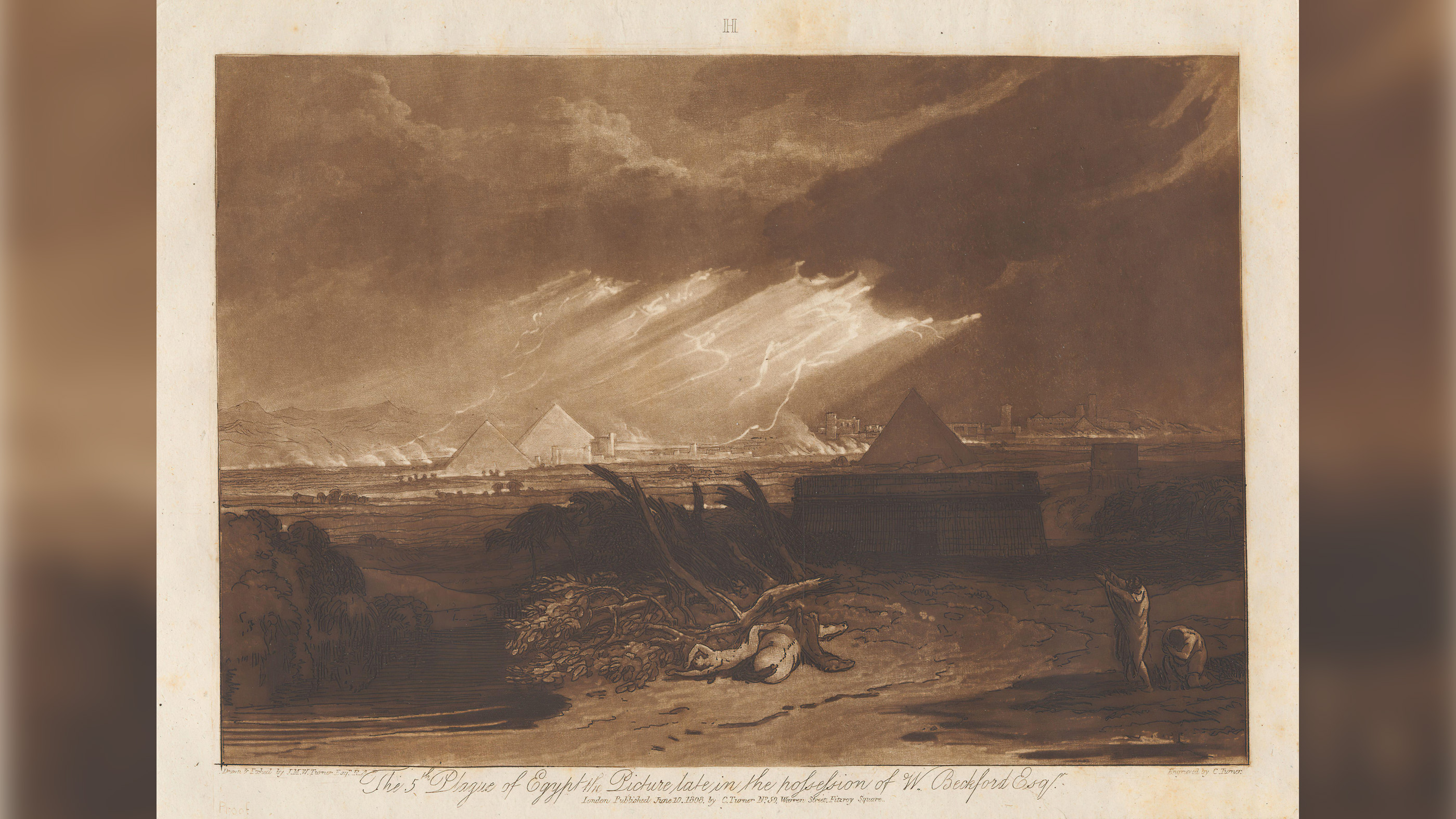
God is not a stranger to evil, and nowhere is that perhaps more true than in Exodus when God offers to harden the heart of a brutal dictator.
In the Book of Exodus, God tells Moses that He will assistance the Israelites leave Egypt and that he will harden the centre of Arab republic of egypt'south pharaoh and then that he will be more resistant to releasing the Israelites. God tells Moses, "When you return to Egypt, see that you perform earlier Pharaoh all the wonders I accept given you the power to do. Only I volition harden his heart so that he will not let the people go," Exodus iv:21. This sounds contradictory since the hardening of pharaoh'southward heart will brand it harder to convince him to let the Israelites leave.
The result is that the pharaoh is incredibly reluctant to let the Israelites go, and God has to inflict the Egyptian people with more than of the 10 plagues — locusts, darkness and hail, amid other afflictions, before the Israelites can leave. God even kills every firstborn son in Egypt, the story goes.
Demoting the gods

Although Judaism and Christianity are both monotheistic religions, the Bible sometimes implies that other gods exist. One example, coming from the Old Testament, is Psalm 82, which says, "God presides in the cracking assembly; He renders judgment among the gods" ... "The gods know nothing; they understand nada. They walk about in darkness; all the foundations of the earth are shaken."
The passage suggests that the Almighty has power over other godly figures and can demote them. In the following passage, God then announces that he has decided to bench the other gods, turning them into mere mortals. "I said, 'You are 'gods'; you are all sons of the Most High.' But you will dice like mere mortals; y'all volition fall like every other ruler."
Stories similar this may provide clues as to how faith evolved in Israel. One theory amid scholars is that multiple gods may have been worshipped early in Israel's history and that over fourth dimension the Israelis adopted a single god.
Hard matchmaking
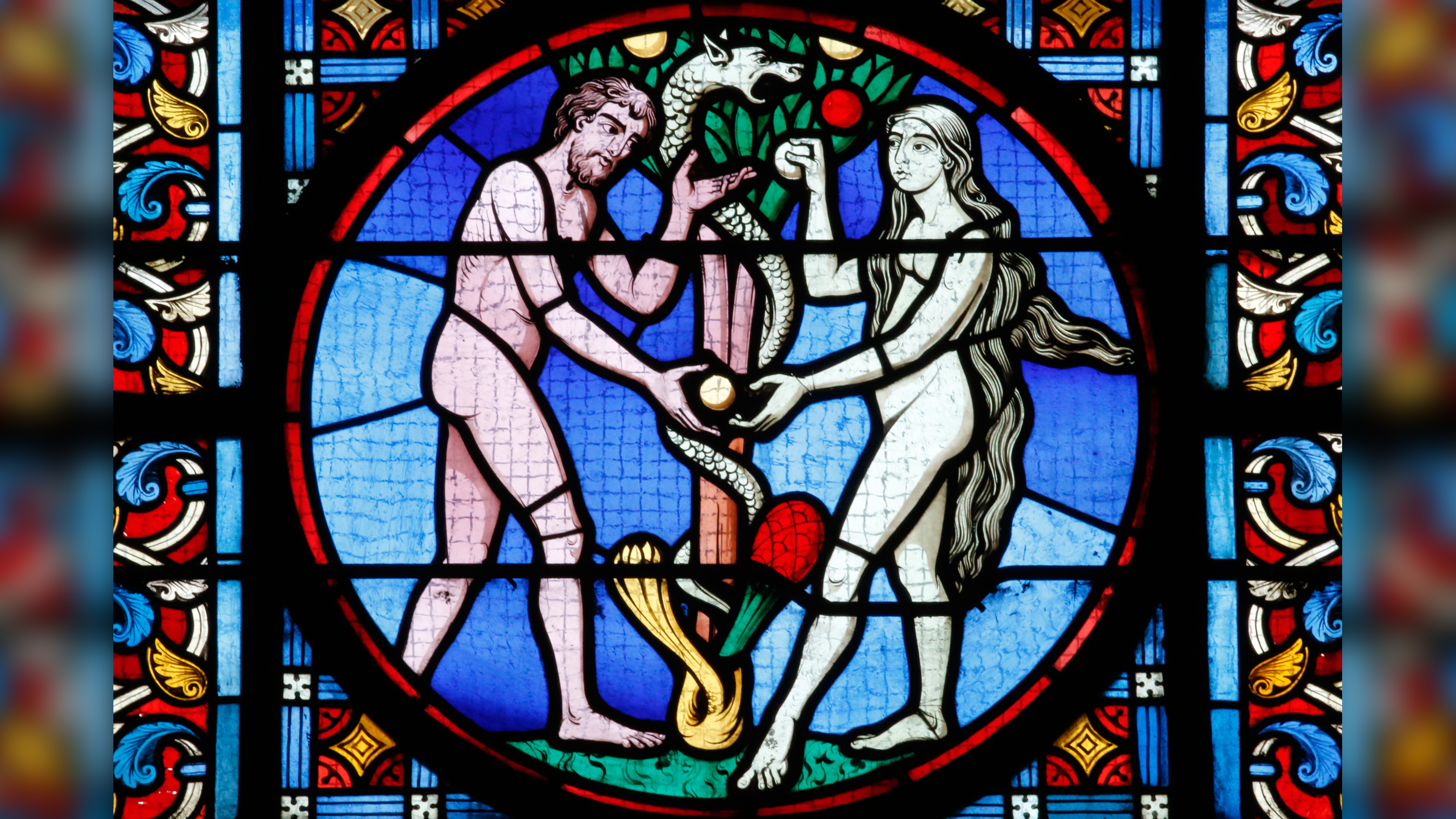
Though there is no archaeological evidence for the existence of the Garden of Eden's star couple, the Old Testament describes in great detail how God created Adam's companion. What you lot may not have realized is that matchmaking wasn't as easy as information technology seemed. Turns out, God had a difficult fourth dimension finding a skilful partner for Adam, the human He had created.
"The Lord God said, 'It is non good for the man to exist lone. I volition brand a helper suitable for him.' Now the Lord God had formed out of the ground all the wild animals and all the birds in the sky. He brought them to the man to see what he would proper name them; and any the human called each living fauna, that was its proper noun. So the man gave names to all the livestock, the birds in the sky and all the wild animals. But for Adam no suitable helper was plant," Genesis two:18-20.
Finally, God decided to use a piece of Adam'south rib to make Eve, who became Adam's wife. Swenson noted that in the original Hebrew the give-and-take Adam "tin can utilise to human beings or a man being generically" and doesn't refer to a male person or female person specifically. Other scholars accept noted the same thing and have suggested that biblical writers intended for Adam to be an androgynous individual.
2.v million people leave at once?

In the Book of Exodus, Moses leads the Israelites out of Egypt and into the Sinai desert, where they wandered for 40 years.
"How could approximately 2 and a half million people, with all their animals, collectively leave Egypt to wander in the Sinai Desert for 40 years?" Swenson wrote in her book. "We are told that they drew water from a rock and that food miraculously appeared, but practically speaking, that'south a whole lot of people with dependent animals in a barren space for a very long time."
The number 40 is mentioned several times in the Bible, with Jesus wandering the desert for twoscore days and 40 nights. What symbolic meaning the number has, if whatever, is a matter of fence among scholars.
Originally published on Alive Science.
wellsbarmenturthe.blogspot.com
Source: https://www.livescience.com/bizarre-biblical-stories.html
Post a Comment for "Funny Interpretation of a Bible Story"